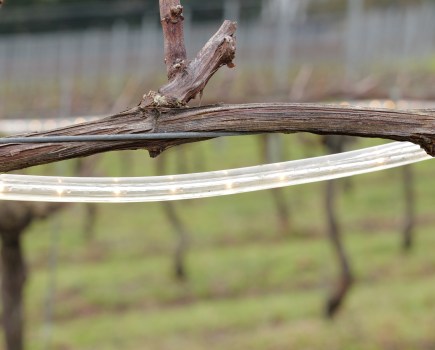With a vast array of biostimulants for use on vines, Hutchinsons agronomists Rob Saunders and Chris Cooper highlight what to look out for.
Historically, the world of biostimulants, which includes plant elicitors, has been familiar to many conventional growers who have used Maxicrop products for over 40 years, but as fungicide chemistry becomes more limited and fertiliser costs rise, so more growers are looking at alternative ways to boost plant defences and nutrient use efficiency.
Understanding the multitude of products within this extensive sector can be quite daunting, especially as products work in different ways, often featuring complex interactions between plant biology and microbes.
Given the complexity of plant/disease/nutrition interactions, it can also be hard to quantify the benefits of using any biostimulant or elicitor, so there may be understandable caution about incurring additional cost.
Elicitors
Essentially, elicitors work by “switching on” the vine’s natural immune system, making it more resilient to attack by pathogens. They do not offer complete immunity or curative control of disease already present, so should be viewed as a way of supporting rather than replacing fungicides.
Elicitors should be used as an addition to integrated disease control programmes, reducing the reliance and pressure on chemical options and “buying” flexibility should conventional spraying get disrupted by the weather.
“Switching on” the specific acquired resistance system offers more sustained disease protection, using the vine’s systemic immunity to reach newly emerged foliage, rather than only protecting those leaves that received a fungicide spray.
One reasonably well understood elicitor is FytoSave, based on two naturally occurring complex carbohydrates, COS
(Chito-oligosaccharides) and OGA (Oligo-galacturonans), which it uses to mimic attack by a pathogen (e.g. powdery mildew), thus stimulating the plant to defend itself.
The effect spreads systematically in the plant and when COS and OGA are detected by cell membrane receptors, three main responses are triggered:
- Cellulose and lignin is deposited to thicken plant cell walls against attack
- Production of oxidising chemicals (peroxidase) toxic to attacking fungi increases
- Production of anti-fungal toxins (salicylic acid) also increases.
It typically takes three initial well-timed applications to build up these defence mechanisms, during which time vines should be kept disease-free, using conventional products where necessary.
Another product, Romeo, uses the cell wall of a specific yeast strain to induce internal plant defence mechanisms against diseases.
Biostimulants
The activity of biostimulants is somewhat different to elicitors, in that biostimulants support the plant’s metabolism and/or the soil microbial community associated with the plant.
Products typically contain substances and/or microorganisms that when applied to the plant or soil, stimulate the natural processes involved with nutrient uptake, nutrient use efficiency, stress tolerance and/or crop quality.
Phosphite-based products, for example, enhance root development, which improves nutrient and water uptake, with all the knock-on benefits this can bring to vine health, resilience and grape quality.
Other biostimulants are believed to increase the production of root exudates, up-regulating a natural process which is key to “feeding” the soil biology involved with nutrient uptake – increasing exudates can therefore boost the nutrient availability to vines. This appears to be one of the actions of CropBioLife (CBL), a flavonoid-based biostimulant.
Glycine-betaine based products (e.g. Lalstim Osmo) can have a particularly useful role early in the season for frost protection and later in the year for overcoming environmental stress.
When exposed to cold, plants produce their own glycine-betaine to improve tolerance to freezing, so applying this before frost occurs (typically 3-4 days ahead), should help condition the plant in readiness, reducing, but not eliminating, the risk of damage occurring.
Seaweed extract products, such as Maxicrop or Kelpak, also offer proven frost protection benefits, as they increase the concentration of solutes in and between cells, fractionally reducing their freezing point. Even a small gain of 0.5°C could make all the difference to reducing frost damage.
In past seasons, such as after the late frosts in May 2020, we have seen the critical role that biostimulants and good nutrition play in providing a wide range of nutrients, hormones, amino acids and other biological compounds to promote recovery and secondary bud growth should frost damage occur.
It is worth noting that any gains to vine health from improved disease resilience are not always visually apparent on robust varieties that already have good genetic tolerance (e.g. Seyval blanc, Rondo). However, the benefits may be clearer in more susceptible varieties, including popular classics such as Chardonnay, Pinot Noir, and Bacchus, especially in high disease pressure seasons.



